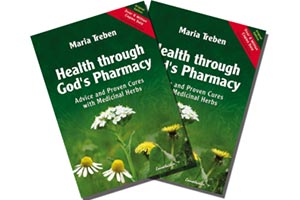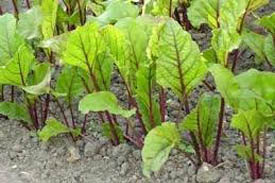Natural Fertilizers
 The one most singular natural fertilizer is animal manure. Your ability to have chickens, rabbits, and even goats is a major advantage in making composts for gardens and fruit trees. If you are not in a position to raise small stock for food and manures you have the option of growing specific vegetation in separate plots to enrich the soil and creating a basis of rotation as medieval farmers did with a four plot system, leaving one plot fallow for a year.
The one most singular natural fertilizer is animal manure. Your ability to have chickens, rabbits, and even goats is a major advantage in making composts for gardens and fruit trees. If you are not in a position to raise small stock for food and manures you have the option of growing specific vegetation in separate plots to enrich the soil and creating a basis of rotation as medieval farmers did with a four plot system, leaving one plot fallow for a year.
Earthworm raising is another form of fertilizer, easy to manage, and it is quiet. Often the earthworm master gardeners are incorporated into compost piles and raised garden beds.
Currently we have the advantage of buying all the natural fertilizers-blended and bagged for our use. We can buy ready made composts and sterilized manures. Various sulfur and limes are also readily available. Merely following the rule of individual plant NPK and pH requirements (discussed in previous articles) coupled with adequate moisture ensure success.
However if we do not have these resources available we will have to rely on the above first three paragraphs. Let us examine them, each in turn.
A dozen banty chickens, kept in a raised-roofed pen will provide you with eggs, meat (if you have the heart), and valued fertilizer. In similar housing you can raise a few rabbits for meat and manures. The manure from chickens and rabbits is the highest quality in nitrogen, phosphorous and potash you can obtain in a natural source; and is best NOT placed directly on the plants, as it is too hot. These manures are best sheet composted, or composted in layered compost piles, and even in earthworm boxes. If you are desperate to use fresh manure you can apply a small quantity as a side dressing, I repeat: small quantity.
The banty chicken is quite small and lends itself to show and limited size egg production such as the miniature Road Island Red types. Because of their size they are not as noisy as larger birds, eat far less, but require protection from cats, dogs and children?s hugs. As with rabbits, a raised ?hutch? works fine with the droppings contained in a boxed-in earthworm bed. There is no need to construct a large ?Chicken House? as you would with 25 to a 100 birds, which consume vast quantities of grain. Twenty-five to thirty five – contained large chickens will consume 700 to 800 pounds of mash in a year. Have no illusions that range feeding large chickens are easy. One acre is needed for 100 chickens to range feed for, at best, a week; unless you are cultivating fenced chicken grain pastures with rotation. In any event you must feed your birds in the evening – calling them in with ?Here chick, chick, chick, chick?. A bird with a full crop of grain, usually corn, sleeps better, is quieter, produces eggs and is healthy. Water must always be available for birds or in fact, any contained animal. Also range feeder birds are susceptible to coyotes, dogs, foxes, weasels, (not cats if the birds are full size and grown), sometimes hawks and uncontrolled toxic residues. Then there is always a classic ?chicken thief? in the neighborhood.
Chickens are fun birds but they are noisy and bothersome to some neighbors, which gives rise to animal laws in some developed areas. Starting with banty chickens is the most expedient, immediate rewarding, and inexpensive investment. A beautiful assortment of chickens may be found at Murray MacMurray Hatchery. Many hatcheries offer varied assortments.
My favorite chicken is the 5-toed ?Dorking?.
Rabbits are the most quiet and highly productive ?hutch? small animals that provide vast qualities of super rich manures, often-higher NPK than chickens. Rabbits have been raised for centuries for meat, fur and manure. Rabbits can be fed on your own timothy-alfalfa hay, or 2nd cutting hay with only occasional supplements of commercial pellets. Contrary to what the commercial bag says, rabbits eat constantly cellulous material and do much better with a volume of hay to be nibbling on. Otherwise they then chew their cage. They require a constant full digestive tract.
Of course I will be writing on their individual management in the future and this next week I will be building new hutches. Since we have our camera – pictures working now, it will be more understandable for the back yard gardener – small producer.
You can grow your own grains and veggies in small boxed-in beds for your own use, and your small stock needs. Comfrey is my first thought and is a handsome plant. I principally grow it for my rabbits, and as a nitrogen booster in the compost piles. Dandelion is valuable, not only as food but in a medicinal capacity too. Clovers and alfalfa have soil enrichment and a return to us. Grains of wheat, oats, buckwheat, and small corns can be eaten and the stalks returned to the soil.
There are so many ways to make composts it is imperative you have a copy of ?The Rodale Guide to Composting?, Rodale Press.
Copyright: 2008, Back2theLand, Mark Steel



